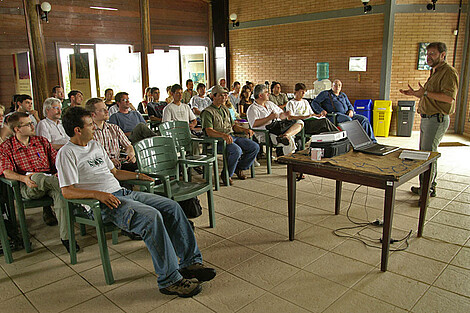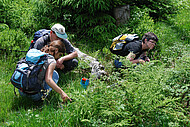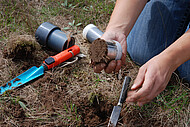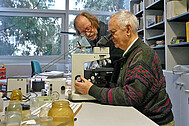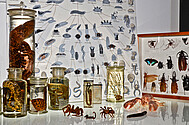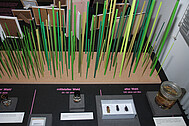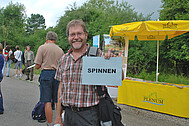The Zoology Section
About 78% of the known 1.2 million species of organisms are animals – the objects and subjects of zoological science. A recent estimate of how many species live on earth yielded the figure of 8.7 million, meaning that some 86% of existing species still await description. At our museum, the key areas of zoological research are the further exploration of temperate and tropical – aquatic and terrestrial ecosystems and taxonomy, the formal description of species and the classification into higher taxonomic groups.
The staff of the zoological section at the museum sample and study animals, mostly under taxonomic and ecological aspects. As insects account for more than 70% of the animal kingdom, a separate entomological section concentrates on their study and collection.
Whereas the vertebrate collection dates back to the early 19th century and comprises mostly random samples of exotic birds and mammals from Africa and South America, today only bats are regularly collected and deposited thanks to the activities of the regional bat protection group.
The current curator of vertebrates Dr. Albrecht Manegold works on the phylogeny and evolution of birds on the basis of morphological characters. His studies involve the application of CT-scans and 3D-models for the study of spirit specimens. Another research area ist the description and analysis of fossil avifaunas from the Pliocene and Pleistocene of south Africa, Morocco and Germany for paleoecological reconstructions.
Since 1965 numerous samples of invertebrates have been collected by museum researchers during ecological studies in Germany and Brazil. The strengths of the collections thus reflect the work of past and current curators and their research: soil fauna (Nematoda, Enchytraeidae, Myriapoda, Collembola) and especially arachnids (e.g. spiders and oribatid mites).
Current research of Dr. Hubert Höfer concentrates on describing and monitoring the fauna of this region (the southern part of Germany, including the Alps), background studies for species and habitat conservation, soil zoology and community ecology. One important current task is the mobilization and management of large datasets obtained from ecological studies (in Europe and South America), making data available for modern analyses of species distributions, ecological preferences and biodiversity conservation.
Presenting the many interesting and wonderful aspects of animals and ecosystems to the public is also an important task for the scientists at the museum. All staff members are willing to respond to questions and queries from individuals and institutions when it comes to animals and zoological phenomena.





